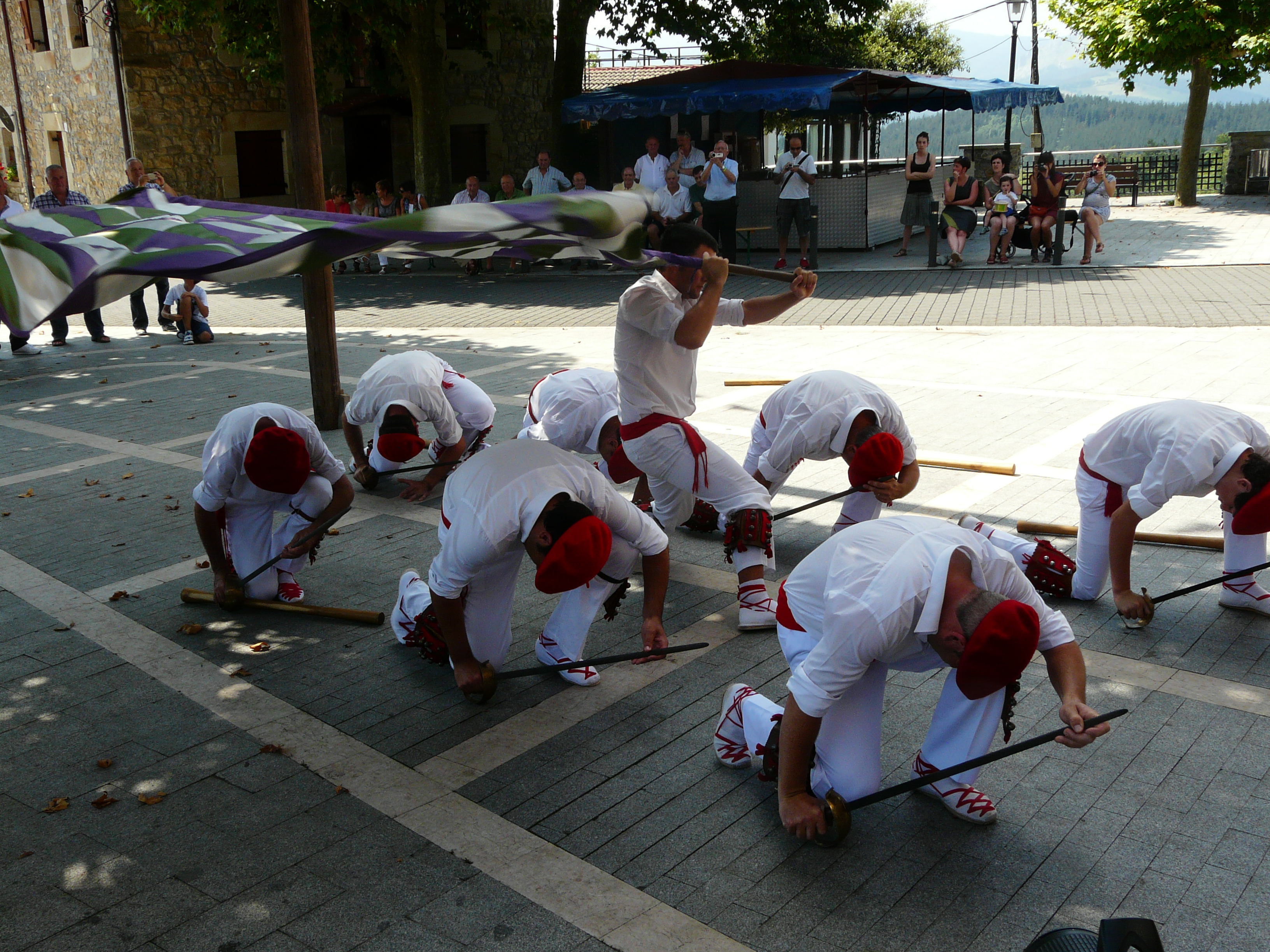Basque ethnography at a glance

The procession leaves church. Garai (Bizkaia), 2013. Igone Etxebarria. Labayru Fundazioa Photographic Archive.
The region of Durango in Bizkaia is home to countless traditions. An example is the set of dances known as Dantzari-dantzea, literally ‘Dance of dancers’. They are executed by eight dancers to the sound of the txistu at village, neighbourhood and brotherhood celebrations.
Already in 1881 Humboldt, the German naturalist, mentioned it in one of his works. The tradition continued uninterrupted and has since spread to every corner of the territory.
On the eve of the patron saint’s day in each locality, the dancers erect the so-called donienatxa (St John’s tree) or mayo (maypole). It is the tall trunk of an oak or any other tree lopped, except for its upper branches, stripped and embellished with vegetables, bay leaves and other greeneries. Once the pole is in place, and dressed in civilian clothing, the dancers perform a final rehearsal of the Dantzari-dantzea and Erregelak dances before the beginning of the celebration.
Dancers enjoyed a certain prestige in the past. On the feast day they marched in procession to the church alongside the authorities and occupied a prominent place during the service. In Garai it is still the dancers themselves who bear the image of the saint as they parade between St Michael’s and St John’s to the notes of the March of St Ignatius.

Opening dance. Garai (Bizkaia), 2013. Igone Etxebarria. Labayru Fundazioa Photographic Archive.
As we have said, Dantzari-dantzea concerns a set of dances. A dance called Agintariena or Ikurrin-dantzea opens the show. The dancers file as they fly the flag to honour the authorities. Zortzikoa, Banangoa, Binangoa, Launangoa, Ezpata-jokoa, Makil-jokoa and Txontxongiloa complete the exhibition. The first four dances are performed in turns by all eight, one, two and four members of the group accordingly, so that dancers can show their skill. Short and long swords are used for the Ezpata-jokoa and sticks for the Makil-jokoa. The Txotxongiloa parody is said to re-enact the capture and execution of a thief.
The Esku-dantzea chain dance closes the festival. Male dancers at the beginning and end of the chain invite women to join in. These days there is no distinction between married and single men or women. That, however, has not always been the case. Formerly in Garai single men danced on St James’ Day. Married men had to wait until the following day, St Anne’s Day. On that same day married women would, by tradition, enjoy chain dancing to the rhythm of the drum.
Igone Etxebarria – Popular Cultural Heritage Department – Labayru Fundazioa
Translated by Jaione Bilbao – Language Department – Labayru Fundazioa
Further information at www.urtesasoiak.com.

